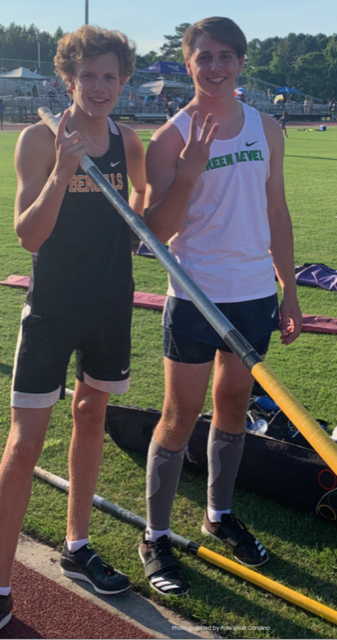
*Originally published in Makes & Misses department of TAKEOFF Magazine, December 2021
By Jose R. San Miguel
Most athletes who come through our doors become members of two teams: school and club.
Many of their schools lack an experienced pole vault coach, poles, and landing systems that are in compliance with NFHS standards. Pole vault clubs fill this gap by providing all three.
Each athlete has their own reason to endure the ups and down of pole vaulting, the intense training necessary to succeed, the innate perseverance to continue when they plateau. This is their why.
As coaches we need to quickly identify the why for each athlete and create a supportive environment in which the team supports the individual’s success, not the other way around. The job of the coach is to develop the athlete to their highest potential, not to use athletes to score enough points to win meets. Without athlete development, the coach fails even if the team wins. School coaches and club coaches can find a way to work together to help the pole vaulter achieve their personal greatness.
Unfortunately, this is not simple. Every year we start our pre-season training in August and focus on general conditioning, strength, and technical development. Our goals are clearly stated: our vaulters will be PR ready by the first official meet in November. We do this year after year.
What happens at this time of the season is that we lose several vaulters because they start attending school practices in early November for their indoor season. At those practices, some school coaches overlook the fact that our athletes have been training for months and are no longer in conditioning mode. Some make pole vaulters earn the right to be on the team by enduring unnecessary training: mile runs and reps of 400-600 meters. They are forced to do what every other track team hopeful has to do, and the work they have already put in with their club is not taken into account.
Here, the pole vaulter regresses. Their legs cannot take the pounding and they become injured with stress fractures and shin splints. Some make it back to the runway but they are never quite the same.
We advise our athletes to advocate for themselves with their school coaches. They do not know that you have dedicated the last three months to pre-season training and may assume you have been sitting on the couch since May. If a school coach insists that a conditioned pole vaulter run unnecessary distance to prove their commitment to the team, we advise them to give a 30% effort and to come in last place. The only one who can fully protect the athlete is the athlete themself.
I attend many meets each year and see high school athletes jumping by themselves at the pit. There are no coaches or adults supporting that athlete, even though the NFHS requires coaches to be present. Coaches are on the track somewhere but they are not at the pit as they cannot dedicate the 3 hours that pole vault will take to justify a couple of athletes.
We have other athletes who attend schools without any pole vault knowledgeable coaches but they do know that vaulters are well rounded athletes and they put them in other events to score points for the team, without considering the impact it has on the athlete’s performance in their main event, the pole vault.
I have had athletes running the 200, 4×100, and 4×200 while the pole vault meet is underway. Others have had to run the 1500m and 3000m, hurdles, or throw shot and discus, all to win a meaningless dual meet. While other events will benefit a vaulter, they must train in those events and not be thrown in on meet day. Being the highest scoring member on a track team will not assist an athlete earn a college scholarship. College coaches will note their mediocre marks in other events and assume they lack athletic ability, when what they truly lack is proper development and forward thinking from the coach who put them in these events in the first place.
If an athlete is ranked 2nd in the state in pole vault, 83rd in the hurdles, 111th in the discus, and 139th in the long jump, what event should they focus on? It is clear where the expertise and potential lies. An athlete should not sacrifice development in the vault unless they are receiving proper training in complementary events like hurdles and long jump.
School coaches have limitations of the calendar and access to facilities. Many clubs do not have these same constraints; we are here to work together, but we must first share the philosophy that the athlete comes first. The win any coach seeks should not be meet points but the development of the athlete. When the vaulter tastes the rush of achieving their why, when they grow in confidence through the adversity of the sport, when they make friends they will cherish forever, then we all win.
In football, maybe the axiom there is no I in team works, but it does not work for the pole vaulter. In pole vault, there is no team in I, meaning the individual cannot compromise themselves for the benefit of the team. It is the work of the coach to support all of the I’s (individuals) in what is best for them, not what is best for the team or the coach.
